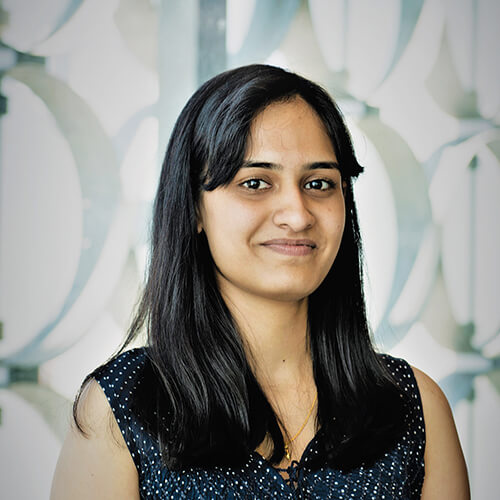Brought to you by
Shruti Nirantar
Innovation:
Air-Metal Nanoelectronics
PhD Candidate, RMIT University; ME (Electrical & Electronics), RMIT University
Aiming to bypass the bulkiness of vacuum encapsulation, Shruti Nirantar has created a virtual vacuum that uses air as an electron transport medium.
Her technology sends electrons through thin air, travelling unimpeded as if in empty space. This way, air-channel transistors are able to work at the maximum possible speed and with higher efficiency.
“Our transistors are the best alternative for harsh environments such as space circuitry.”
According to Nirantar, this eliminates the use of conventional semiconductors, which are reaching their physical and operational limit.
A conventional solid-channel transistor slows the speed of electrons and can be unsuitable to extreme surroundings. As a result, computation is not as fast and power efficient as it could be.
“We addressed this by fooling electrons into thinking that they are traveling in a vacuum, in the air medium, with practical demonstrations of three metal-air transistors using standard nanofabrication techniques,” she said.
“The introduced fabrication approach also enables implementation of switchable nanoelectronics on any surface with higher performance.”
This single-step nanofabrication approach is readily adaptable by industry. The near-term application, according to Nirantar, is to use this transistor in electronic chips, which would address ongoing demand for faster processors with high capacity that conserve energy.
“Semiconductors change their electronic properties in harsh environments, unlike air,” she said.
“Our transistors are the best alternative for harsh environments such as space circuitry.”

Nirantar said this work underpins innovation in electronic engineering.
“The ability to achieve current through air utilising standard fabrication processes and materials creates a platform readily adoptable by industry,” she said.
“Achieving this had to overcome major challenges in breaking down conventional designs and structures by exploring the combination of metals and air for the first time.”
The technology has already attracted industry players interested in commercialisation.